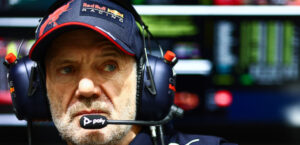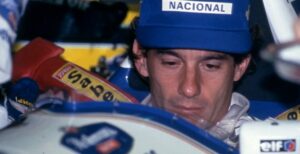Pirelli startte naar aanleiding van de klapband van Sebastian Vettel tijdens de GP van België een grondig onderzoek naar de oorzaak ervan. De Italiaanse bandenleverancier maakte vandaag de resultaten bekend.
Na afloop van de GP van België ontstond er heel wat commotie omdat Sebastian Vettel tegen het einde van de race plots een klapband had. Het was de tweede klapband al van het raceweekend, nadat eerder ook Nico Rosberg een klapband kreeg tijdens de tweede oefensessie.
Pirelli liet toen weten dat beide klapbanden weinig met elkaar gemeen hadden. Volgens Pirelli was de klapband van Rosberg toe te schrijven aan een ‘externe factor’ die een snee in de band had veroorzaakt. De klapband van Vettel was volgens Pirelli dan weer simpelweg toe te schrijven aan slijtage. Pirelli was van mening dat de band aan het einde van zijn levenscyclus zat, ook al was Vettel nog maar bezig aan zijn achtentwintigste ronde op dat setje banden en had Pirelli een levensduur van veertig ronden vooropgesteld.
Er heerste dan ook heel wat ongerustheid in de F1-paddock want het was maar de vraag of de banden veilig genoeg waren om in Monza te gebruiken, waar de gemiddelde snelheid nog hoger ligt. Pirelli startte daarop een grondig onderzoek naar de oorzaak van de klapband van Vettel. De resultaten van dat onderzoek zijn nu bekendgemaakt.
Pirelli voerde uitgebreide tests uit en daaruit blijkt dat beide klapbanden veroorzaakt zijn door ‘externe factoren’ die een snee in de band teweeg hebben gebracht. Vervolgens is er een klapband ontstaan.
Volgens Pirelli werden er geen structurele problemen vastgesteld met de banden. Het baseert zich daarvoor op tests die werden gedaan op banden na zowel de oefensessies alsook de race. Wel zijn er bij heel wat banden sneetjes vastgesteld. F1journaal.be berichtte hierover reeds enkele dagen na de GP van België (Lees: “Pirelli vond nog beschadigde banden tijdens GP van België”).
Volgens Pirelli waren deze sneetjes specifiek voor het circuit van Spa-Francorchamps. Vermoedt wordt dat de zware belasting die eigen is aan het circuit in combinatie met rommel op en naast de baan deze sneetjes heeft veroorzaakt.
Pirelli stelde na afloop van de oefensessies reeds vast dat er heel wat banden sneetjes hadden en het heeft toen aan de FIA gevraagd om op het circuit van Spa-Francorchamps maatregelen te nemen om de baan alsook de uitloopstroken extra te reinigen. Dat is ook gebeurd, maar die maatregelen hebben de klapband van Sebastian Vettel dus niet kunnen verhinderen.
Tijdens het raceweekend in België werden er bij in totaal 63 banden sneetjes aangetroffen. Dat is een zeer hoog aantal, aangezien Pirelli per event dit jaar gemiddeld amper 1,2 sneetjes heeft vastgesteld. En dat is tijdens de races die voorafgingen aan de GP van België alsook de F1-tests.
Pirelli wil nu samen met de FIA maatregelen nemen om de circuits en uitloopstroken properder te houden, zodat kleine vlijmscherpe stukjes ‘debris’ geen beschadigingen aan de banden meer veroorzaken en bijgevolg ook geen klapband kunnen veroorzaken. De FIA liet alvast weten tevreden te zijn met de onderzoeksresultaten van Pirelli.
Voor de volledigheid publiceren we hieronder het integrale persbericht dat Pirelli vandaag verpreidde:
After Spa analysis conclusions
TECHNICAL ANALYSIS CONFIRMS THE ABSENCE OF ANY STRUCTURAL PROBLEM WITH THE TYRES USED AT THE BELGIAN GRAND PRIX
TESTS HAVE SHOWN THAT THE FAILURES AT SPA WERE DOWN TO THE EXCEPTIONAL COMBINED EFFECT OF DEBRIS ON THE TRACK AND PROLONGED TYRE USAGE ON A CIRCUIT THAT IS PARTICULARLYDEMANDING
AT THE BELGIAN GRAND PRIX THERE WERE 63 CUTS IN THE TYRES, COMPARED TO AN AVERAGE OF 1.2 CUTS PER CIRCUIT IN THE PREVIOUS
15 EVENTS (INCLUDING RACES AND TESTS)
IN ORDER TO GUARANTEE GREATER SAFETY, PIRELLI PROPOSES WITH THE FIA TO UNDERTAKE A STUDY TO OPTIMISE THE WAY IN WHICH CIRCUITS ARE CLEANED
Milan, September 3, 2015 – Following the recent technical analysis carried out on the tyres used at Spa, Pirelli concludes that:
1)The tests carried out by Pirelli on the tyres used at Spa have confirmed the absence of any structural problems. Pirelli has undertaken in-depth analysis on the materials and production processes used, utilising two different methods of tests and checks.
Microscopic analysis, carried out on a large number of the tyres after the second free practice session, showed no signs of fatigue or integrity issues. The same result was confirmed for the tyres used during the race, which were cross-sectioned and analysed in Milan. Some of the tyres used in the race were subjected to a further laboratory fatigue test, passing all the assessments conclusively and confirming that there was no structural degradation or problem on-track.
Since the start of 2015, 13,748 slick tyres have been used: including on especially severe tracks like Sepang, Barcelona and Silverstone. No problems have ever been discovered, underlining the fundamental solidity of the product.
2)The events of Spa can therefore be put down to external factors, linked with the prolonged use of the tyres on one of the most severe tracks of the championship.
The external factors are demonstrated by a total of 63 cuts found in the tread of the Formula One tyres used over the course of the Spa weekend, following numerous incidents that took place during the support races before the Formula One grand prix. In the previous 15 events (10 races and five test sessions) an average of only 1.2 cuts per event were noted. All this indicates an anomalous amount of detritus on the track in Spa, with a consequent increased risk of encountering a foreign object.
If even a small piece of debris – made of carbon or any other particularly sharp material – penetrates and cuts the various structural parts of a tyre (which is obviously subject to high-speed use, and more susceptible if used for a prolonged period) without penetrating the actual structure, this can cause a failure that is different to that found in the event of a normal puncture, which is characterised by a loss of tyre pressure. And the former was the type of event seen on Sebastian Vettel’s tyre at Spa.
As for Nico Rosberg, in whose case the tyre usage was less, the tyre held up – as the footage clearly shows – and the failure was not instantaneous. For four corners previously, an element of the internal structure of the tyre was visible, coming out of the tread pattern. This highlighted the existence of the damage and the consequent start of the tyre’s attrition.
Throughout the Spa weekend (including practice, qualifying and the race) cuts caused by debris were found on the tyres of other drivers, which damaged the construction but did not cause any failures.
3)At the end of qualifying on Saturday at Spa, following the exceptional number of cuts noted to the tyres, Pirelli pointed out the condition of the circuit to the FIA and asked for it to be cleaned, as well as for the teams to be told. The FIA reacted promptly in arranging for the track to be cleaned and advising the teams.
Together with the FIA, Pirelli proposes a study to evaluate the way in which circuits can be cleaned most effectively.
a:0:{}
Gewoon nieuwsitem
a:0:{}











